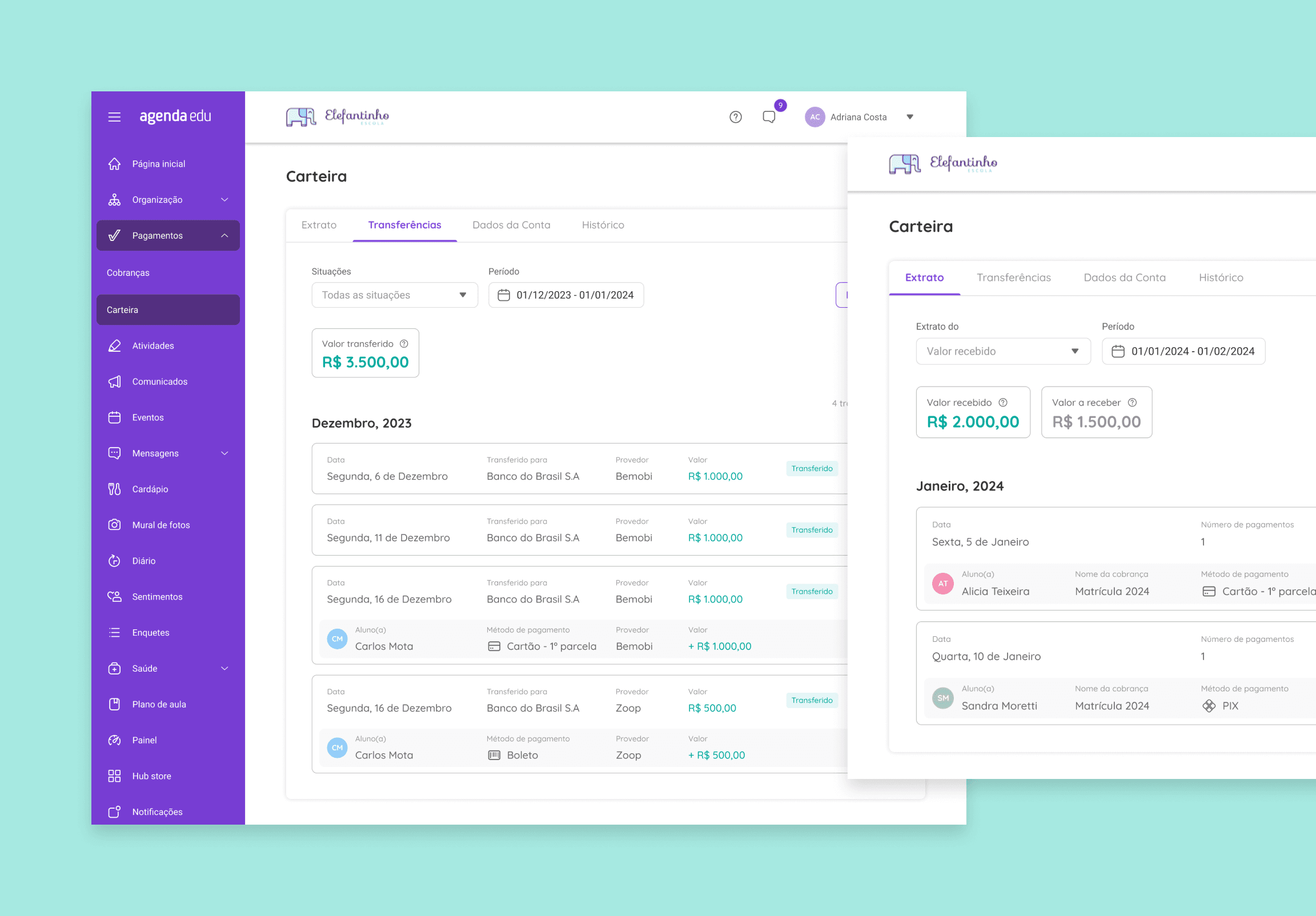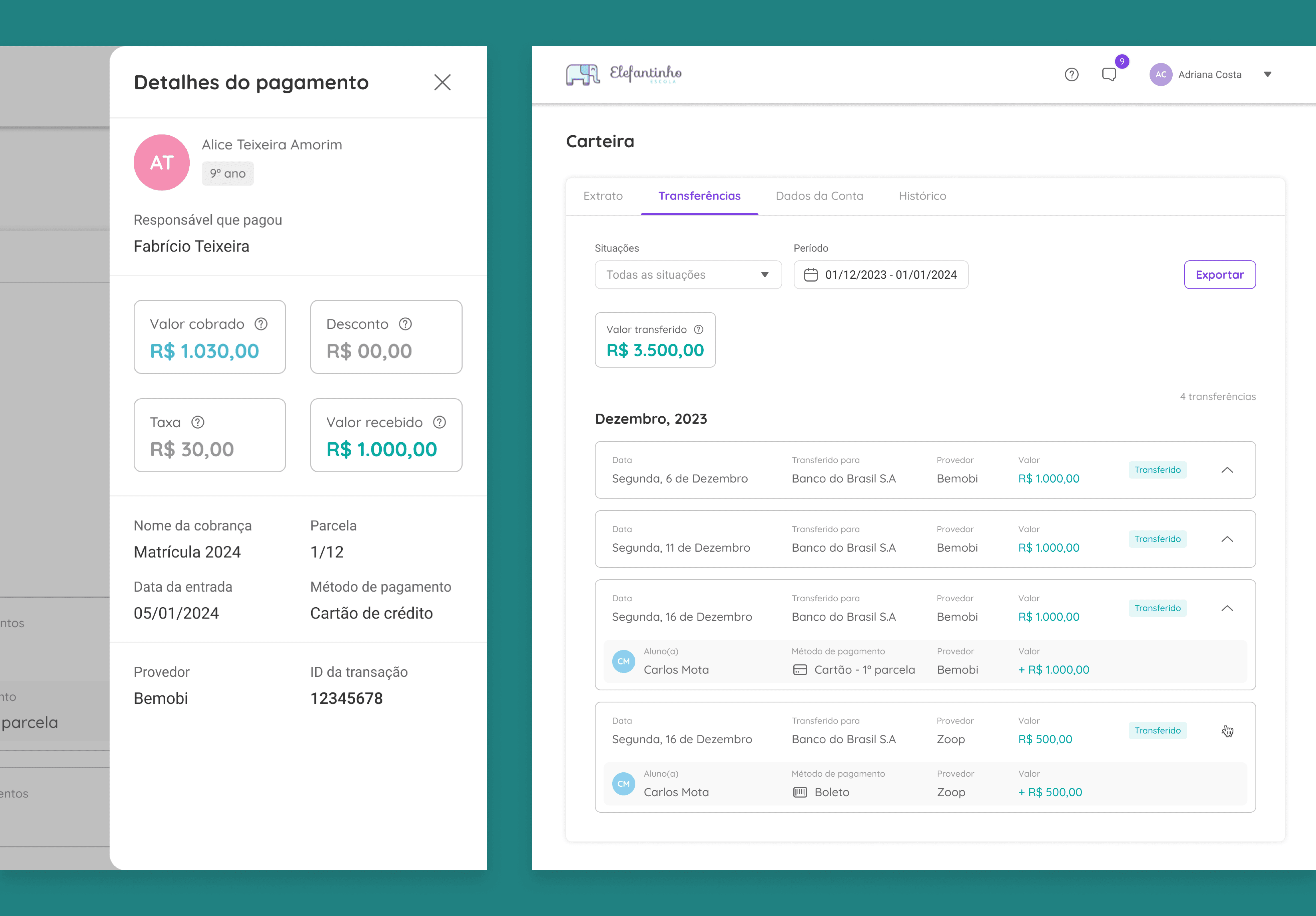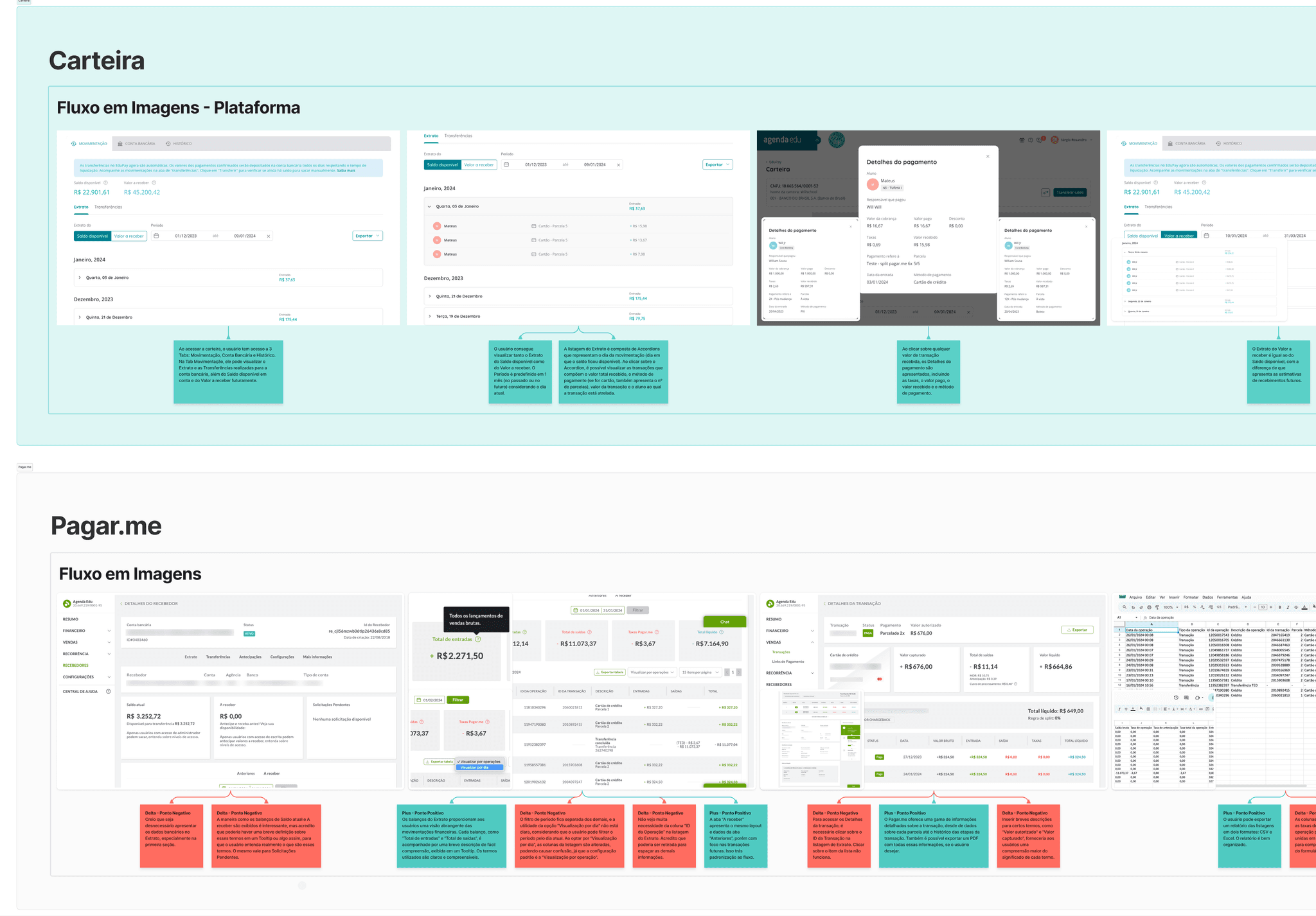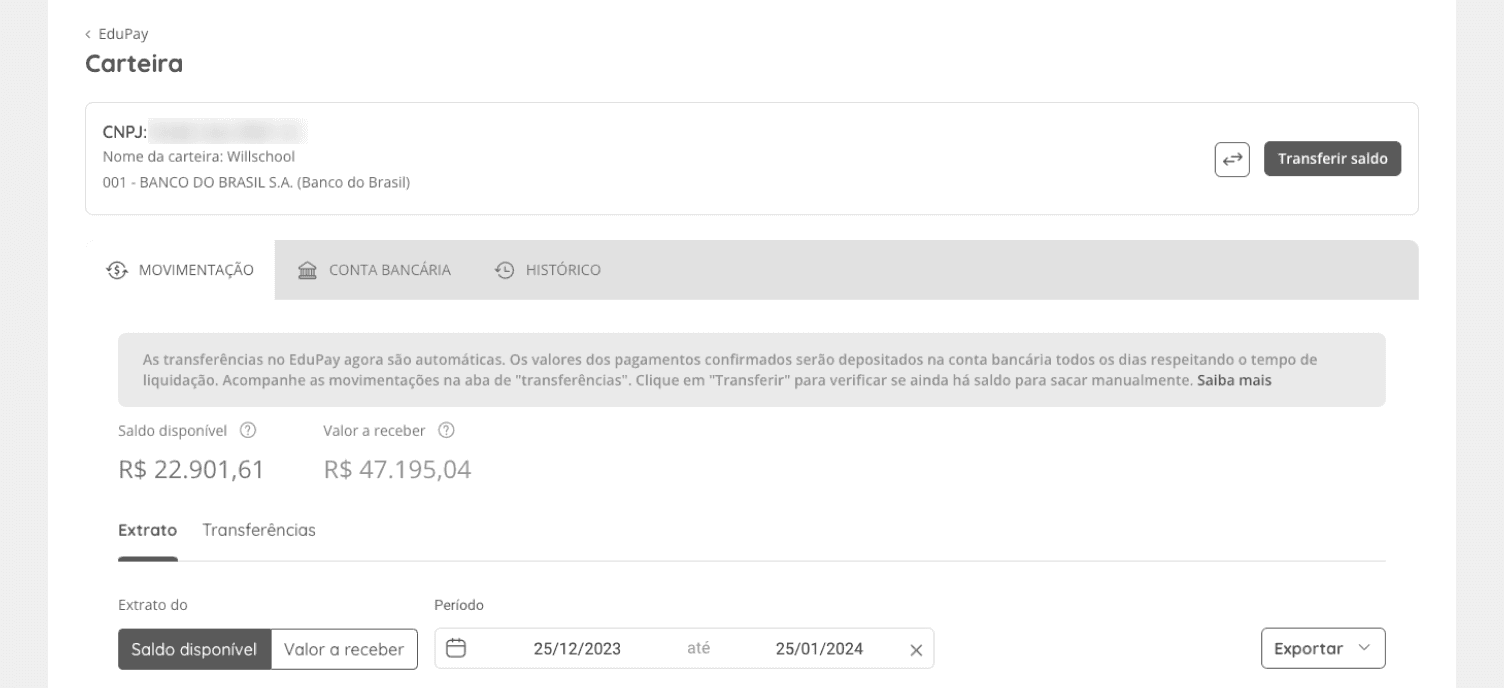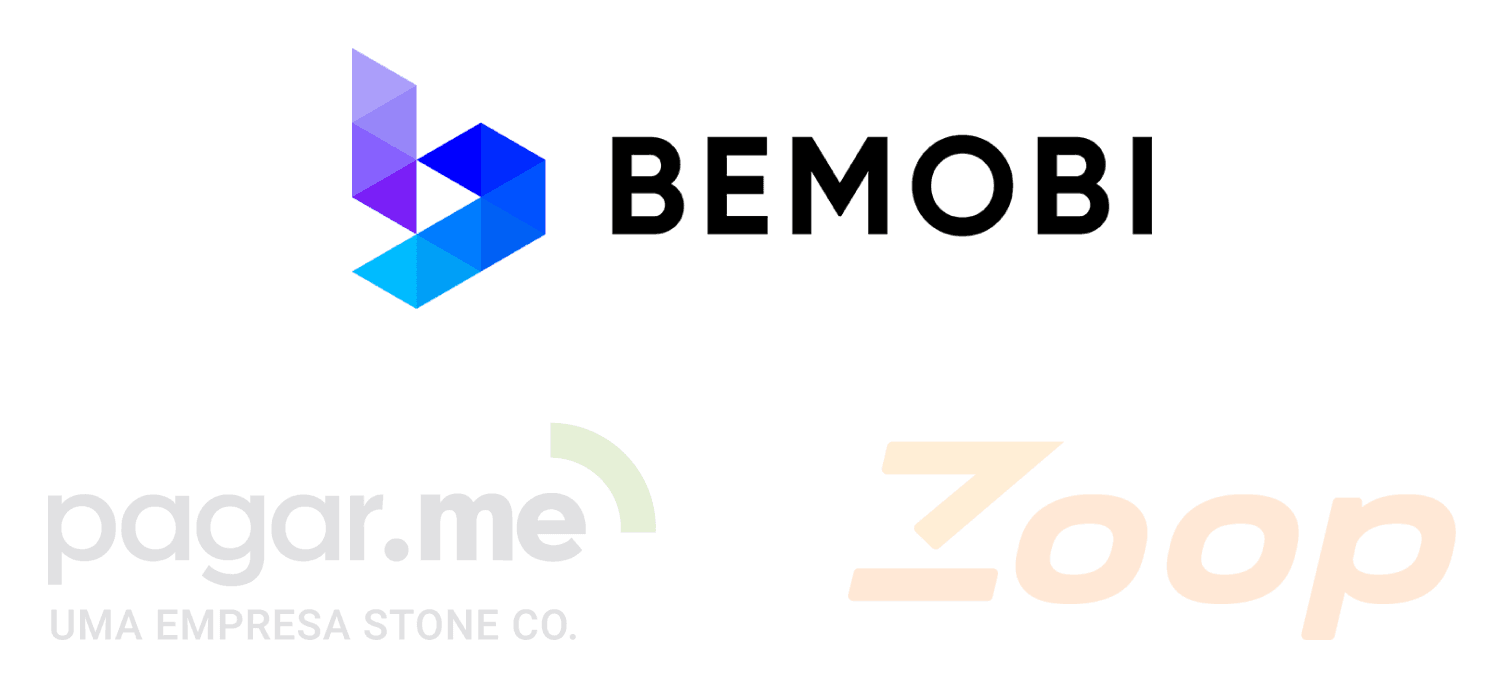Learning
Next Steps
Before even starting the prototypes, we carried out a dynamic to define our priorities and future updates to the Portfolio. See some of them below:
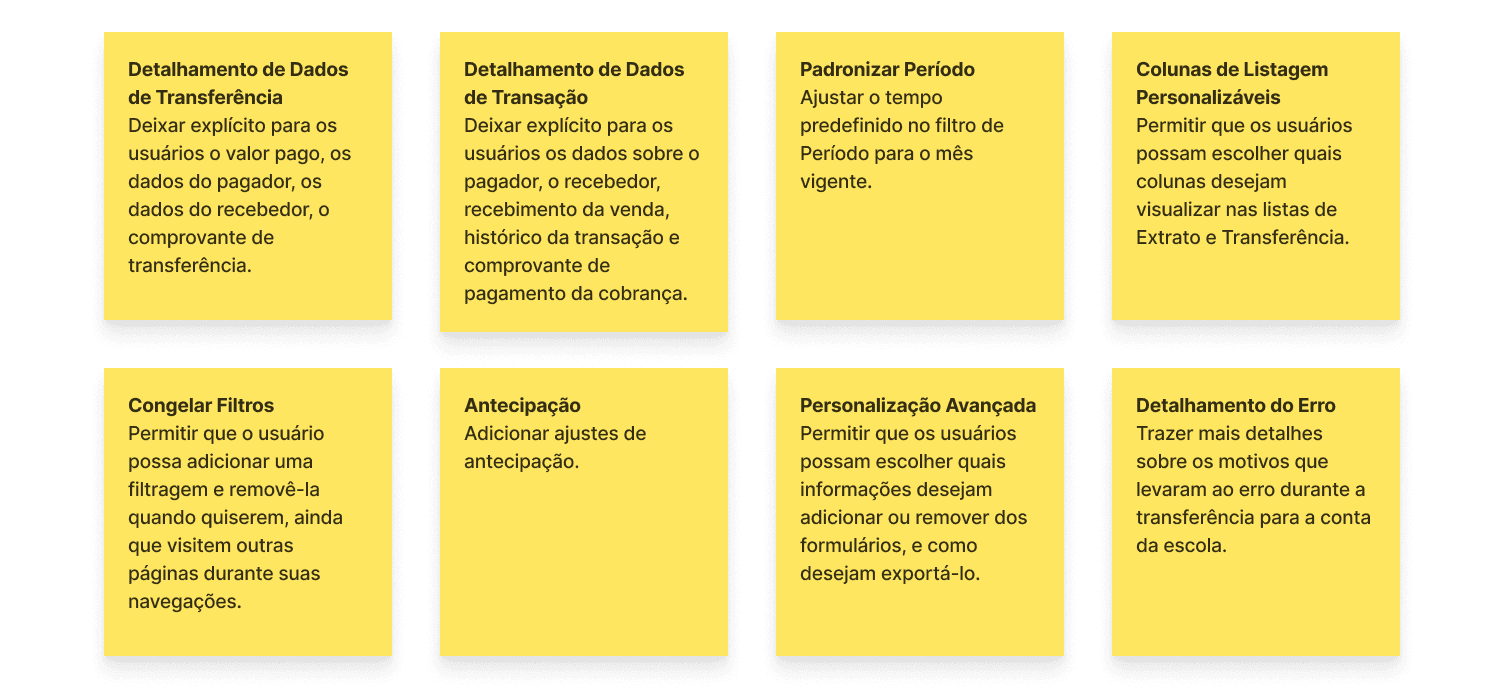
Results
Full integration
Zero tickets
Solution
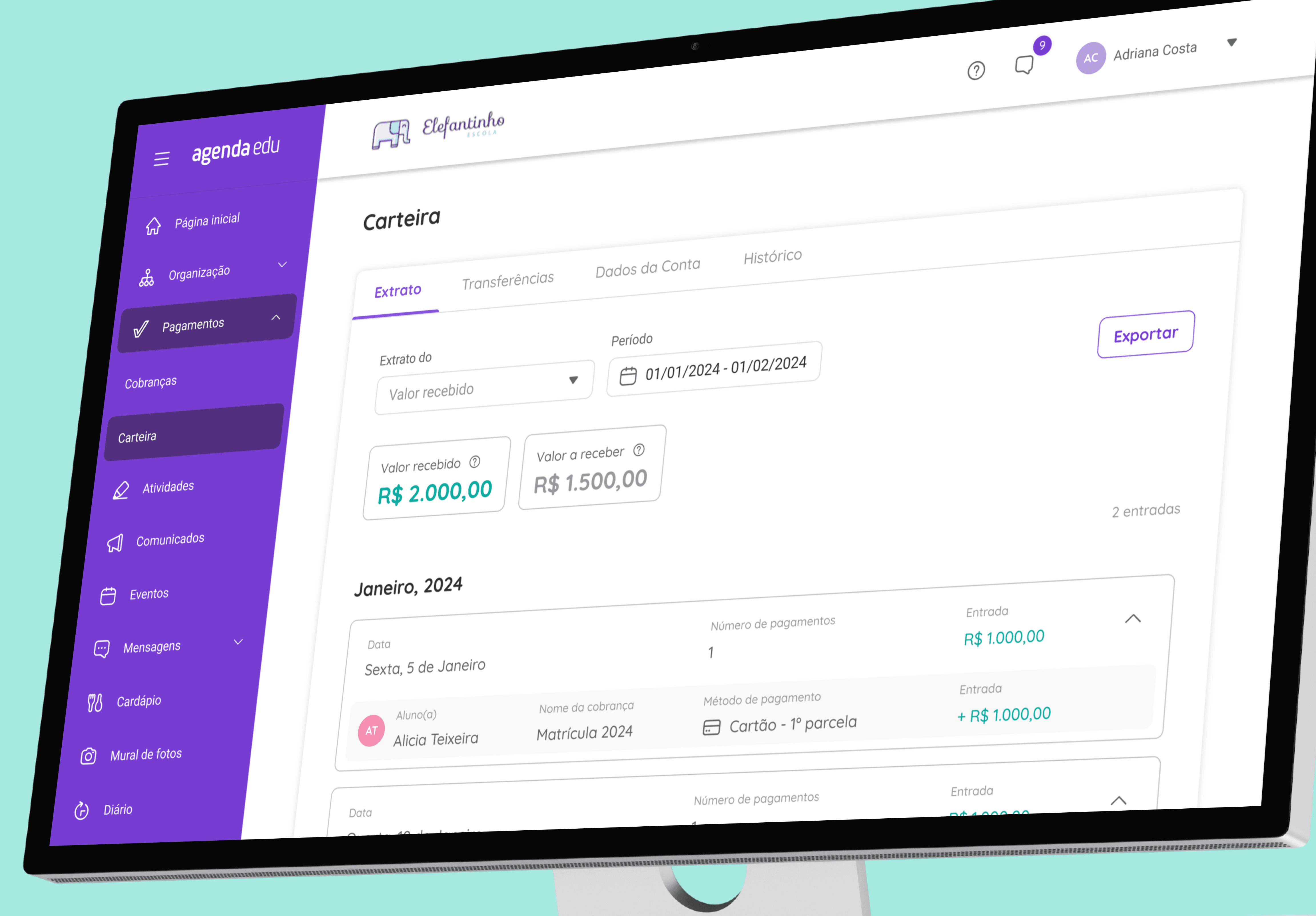
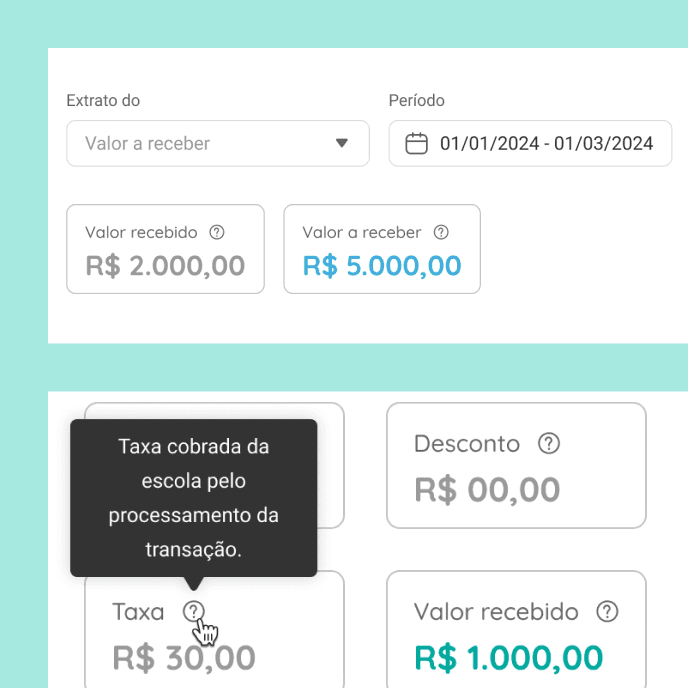
Simplified terms like "Amount to Pay" and "Amount to Receive," making it easier for schools to search for charges by name or details.

Removed manual transfer flows and filtering by title. Highlighted the payment provider for each transfer to enhance clarity for schools.
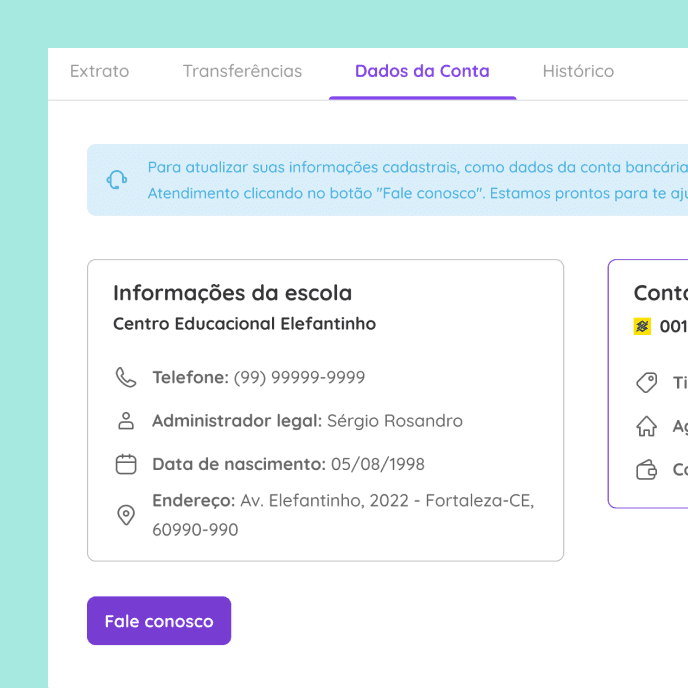
Eliminated duplicate content in the Wallet and simplified the process for editing bank details, connecting schools directly to Support.

Made bank reconciliation easier for schools by removing technical and duplicate data from Wallet reports.
Process
How could we display Bemobi's transactions and transfers in the Wallet? What usability improvements were needed? Were the Wallet’s components, layouts, and information outdated? These and other questions were addressed through stakeholder interviews, functionality mapping, heuristic analysis, and studies of payment providers. Here are the key findings:
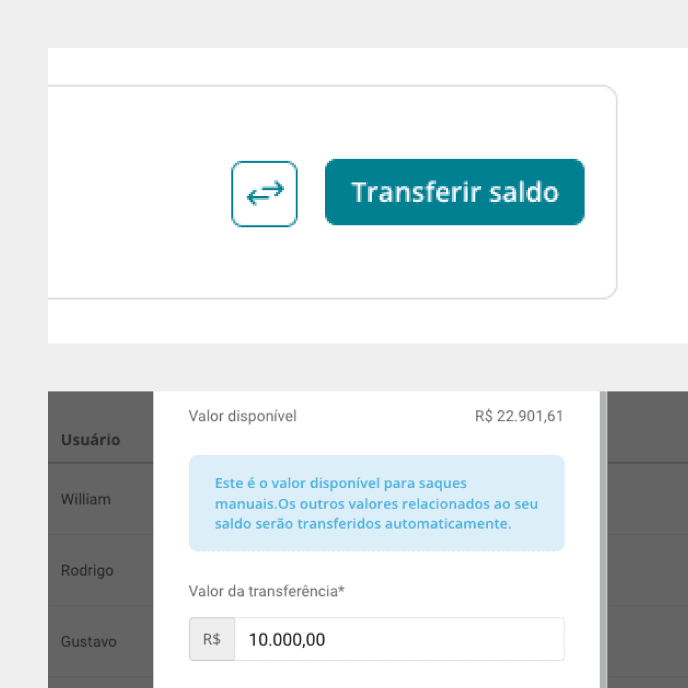
With Pagar.me, transfers were manual, initiated by the school via the platform. In Bemobi and Zoop, transfers are automatic, but the manual transfer flow still existed in the Wallet unnecessarily.
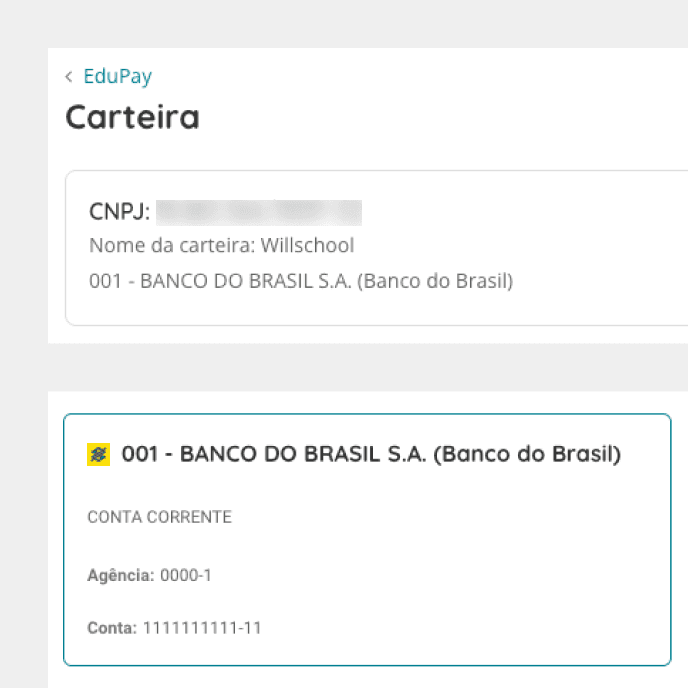
There were unnecessary components and repeated information above the Statement and Transfers lists, especially data about the school's Wallet, which was also present in the Bank Data tab.
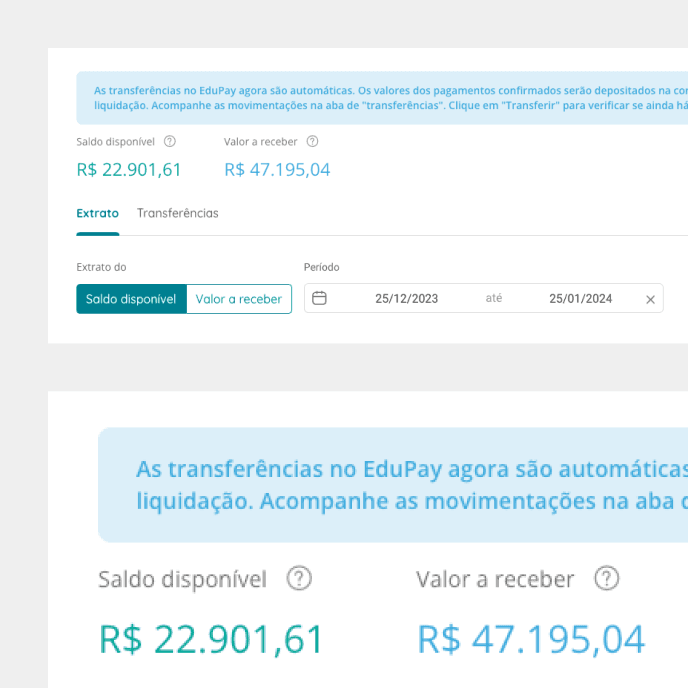
These terms needed adjustment, as the Available Balance began being transferred automatically to the school’s account. Additionally, there was no way to filter this data, complicating analysis.
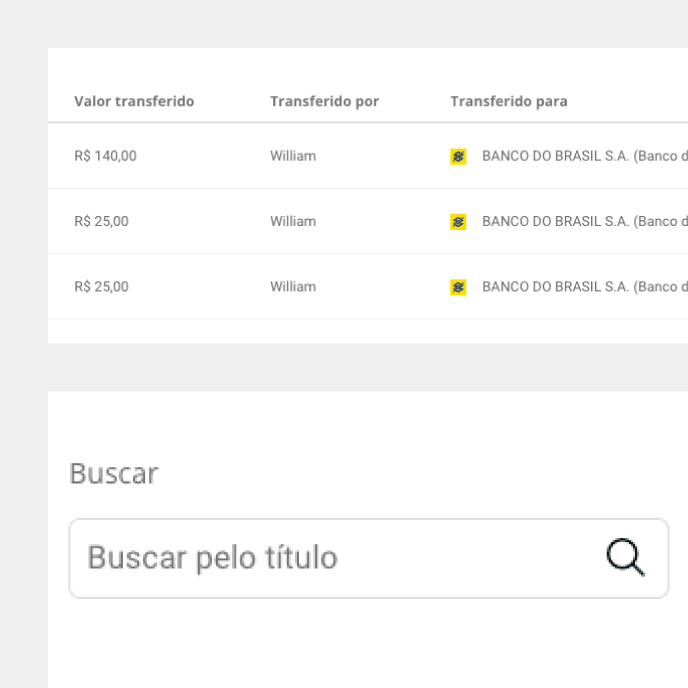
The Statement list didn’t show charge names, making it difficult to search. The Transfers list didn’t display automatic transfer transactions and had an unnecessary filter by title.

Reports displayed irrelevant fields for schools, such as Legacy ID and Anticipation. Additionally, fees were duplicated in installment payments, distorting the actual amount deducted.

Schools struggled to compare created and paid charges. They previously used the Wallet's Charges Report, which was removed during migration to Zoop, hindering analysis.
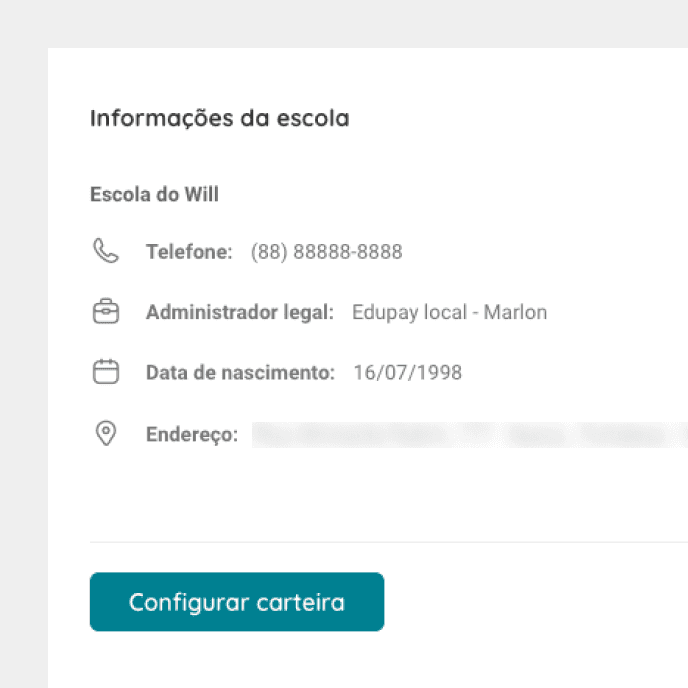
With Pagar.me and Zoop, schools could edit their bank details directly in the Wallet. However, the Bemobi system didn’t allow in-platform edits and required requests to the Support team.

The Wallet hadn’t received significant updates since its creation. Pages were outdated and didn’t follow the design system, with old components and disorganized content.
Challenges
Updates to the Wallet were critical for integration with Bemobi, creating a strong sense of urgency for the project.
Schools could receive payments from two different providers until the integration with Bemobi was fully completed.
Communication and transparency issues arose during the previous provider migration - this could not happen again.
Goals
Maximize the charges generated (GMV) and paid (TPV) through the platform to drive revenue growth.
Enable all schools in the network to exclusively use Bemobi's financial provider.
Problem
The Wallet, a feature used to track transactions and manage financial information, was configured for operations with Pagar.me and Zoop but not with Bemobi. Additionally, it hadn’t received significant updates since its launch and faced usability issues.
9 months to design and develop.
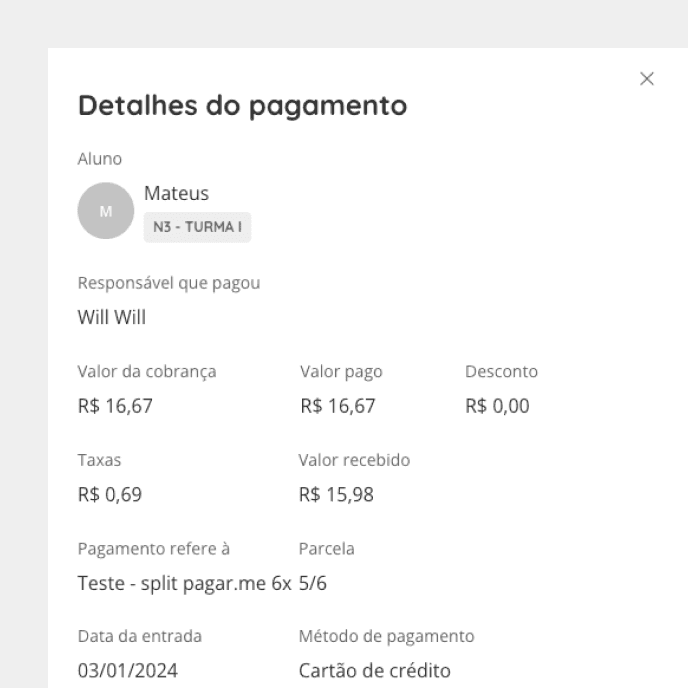
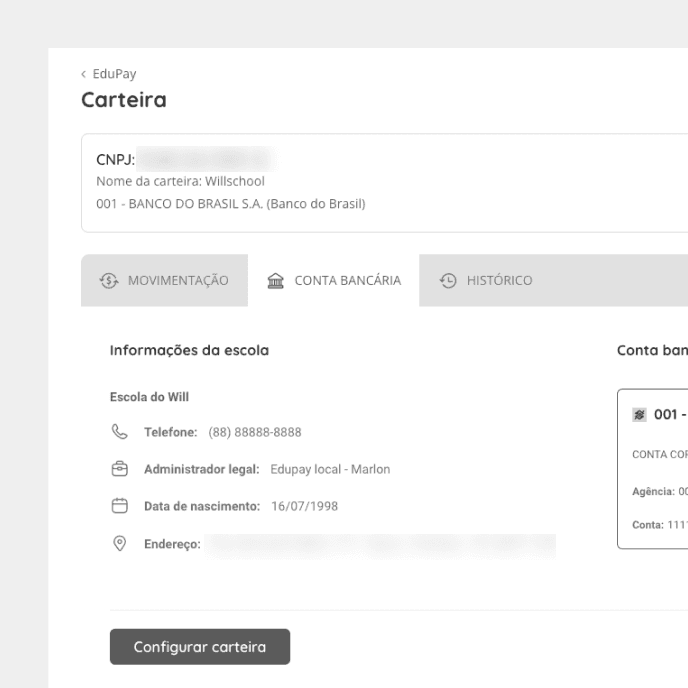
Opportunity
In December 2023, Agenda Edu was acquired by Bemobi, a global technology company specializing in digital payments. With Bemobi’s payment provider, Agenda Edu could offer more competitive rates to schools, replacing the financial services previously provided by Pagar.me and Zoop. In the Education SuperApp, EduPay evolved into the Payments module.
Objections
We found that the main objections to using EduPay's features were

Larger schools (1,000+ students) typically rely on ERPs for financial management. However, our platform lacked integration with the leading ERPs in the market.

The combined service fees and payment provider charges discouraged larger schools from adopting EduPay’s features.
Context
In October 2023, our main challenge with EduPay, Agenda Edu’s financial product, was to expand the Ideal Customer Profile (ICP) to drive revenue growth. The product wasn’t appealing to larger schools and educational networks. To address this, we conducted research and interviews to identify ways to make it easier for these institutions to join our platform and boost revenue.
We revamped the Wallet and integrated 100% of the user base with a new payment provider, offering more competitive service fees for schools while boosting Agenda Edu's revenue.
